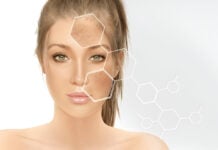In recent years, the beauty and skincare industry has seen a surge in home-use LED (Light Emitting Diode) devices promising to deliver professional-grade skin benefits conveniently at home. From claims of reducing wrinkles and acne to improving skin tone and texture, these gadgets have become increasingly popular among skincare enthusiasts. But are these devices truly effective, or are they just an expensive gimmick? Let’s dive into the science and real-world evidence to understand whether home-use LED devices deserve a place in your skincare routine.
What Are LED Devices and How Do They Work?
LED therapy uses specific wavelengths of light to penetrate the skin and trigger biological processes that promote skin health. Different colors of light target different skin concerns: red light is known for anti-aging benefits by stimulating collagen production, blue light is primarily used to kill acne-causing bacteria, and near-infrared light penetrates deeper for healing and inflammation reduction (Avci et al., 2013).
In professional settings, dermatologists and aestheticians use powerful LED panels that emit controlled wavelengths at calibrated intensities. Home-use devices are essentially smaller, less powerful versions intended for personal use. Their promise lies in providing similar benefits in a safe, convenient manner.
The Science Behind LED Therapy
Numerous studies support the efficacy of LED therapy, particularly in professional environments. For example, red light therapy has been shown to enhance collagen synthesis, reduce fine lines, and improve skin elasticity (Lee et al., 2020). Blue light therapy is widely accepted as an effective treatment for mild to moderate acne by reducing Propionibacterium acnes bacteria on the skin (Gold et al., 2011).
However, these studies often involve specific light intensities and treatment durations that may not be replicated by all home devices. The effectiveness depends largely on the wavelength, light intensity (measured in mW/cm²), and duration of use.
How Do Home-Use Devices Compare?
Home-use LED devices generally have lower light intensities than professional machines to ensure safety. While this makes them user-friendly, it also raises questions about their effectiveness. Lower intensities might mean longer treatment times to achieve results, or in some cases, insufficient stimulation to produce significant changes.
A 2018 review by Barolet and Boucher suggests that while home devices can provide benefits, users should have realistic expectations. Consistent use over several weeks or months is usually necessary, and results may be more subtle compared to clinical treatments. In other words, patience and adherence to the recommended usage are key.
Pros of Home-Use LED Devices
- Convenience: You can use the device at your own pace and schedule, without the need for frequent clinic visits.
- Cost-Effective in the Long Run: While the initial investment might be high, over time it can be less expensive than multiple in-office treatments.
- Safety: Home devices have built-in safety limits to prevent overexposure or skin damage.
- Maintenance: They can help maintain and extend the results of professional treatments.
Cons and Limitations
- Lower Power: Reduced light intensity may lead to less dramatic or slower results.
- User Error: Without professional guidance, improper use (wrong distance, timing, or frequency) could reduce effectiveness.
- Not a Cure-All: LED therapy is best as part of a comprehensive skincare regimen; it won’t replace products or treatments for severe skin conditions.
- Cost: Quality home devices can be pricey, and cheaper models may lack efficacy or durability.
Real User Experiences
Many users report positive changes such as smoother skin texture, fewer breakouts, and a healthy glow after regular use of home LED devices. However, it’s important to note that individual results vary based on skin type, device quality, and consistency.
One common theme among enthusiasts is that combining LED therapy with proper skincare like moisturizing and sunscreen enhances results. Also, people with certain conditions (e.g., photosensitive skin, epilepsy) should consult a dermatologist before use.
Expert Recommendations
Dermatologists generally view home-use LED devices as a beneficial adjunct to traditional skincare, especially for mild skin issues and maintenance. Dr. Elizabeth Tanzi, a board-certified dermatologist, emphasizes, “Home LED devices can complement your skincare routine, but don’t expect overnight miracles. Consistency and realistic expectations are crucial” (Tanzi, 2020).
Effective or Waste?
Home-use LED devices are not a waste, but they are not magic wands either. When used properly and patiently, they can provide genuine skin benefits, particularly in anti-aging and acne management. However, the quality of the device, adherence to recommended protocols, and combining treatments with a solid skincare routine are critical factors.
If you’re considering investing in a home LED device, do your research, read user reviews, and ideally consult a skincare professional to select a suitable product. Remember, like all skincare treatments, LED therapy takes time and consistency to show results. Viewed with realistic expectations, these devices can be a convenient and effective tool in your skincare arsenal.
References
- Avci, P., Gupta, A., Sadasivam, M., Vecchio, D., Pam, Z., Pam, N., & Hamblin, M. R. (2013). Low-level laser (light) therapy (LLLT) in skin: Stimulating, healing, restoring. Seminars in Cutaneous Medicine and Surgery, 32(1), 41–52. https://doi.org/10.12788/j.sder.0037
- Barolet, D., & Boucher, A. (2018). Home-use light-emitting diode devices for photomodulation: A review of the literature and discussion of efficacy and safety. Journal of Cosmetic Dermatology, 17(6), 977–985. https://doi.org/10.1111/jocd.12504
- Gold, M. H., Sensing, W., & Gold, M. (2011). A review of the use of blue light in dermatology. Journal of Drugs in Dermatology, 10(11), 1256-1260.
- Lee, S. Y., You, C. E., & Park, M. Y. (2020). The effects of red and near-infrared light on skin wrinkles and elasticity: A randomized, placebo-controlled trial. Lasers in Medical Science, 35(7), 1513–1519. https://doi.org/10.1007/s10103-020-03056-x
- Tanzi, E. (2020). Using home LED devices safely and effectively. American Academy of Dermatology. Retrieved from https://www.aad.org/public/diseases/a-z/light-therapy












